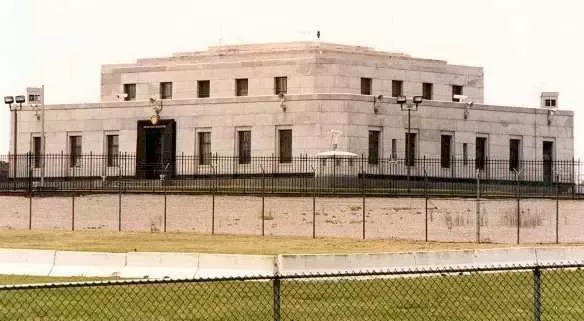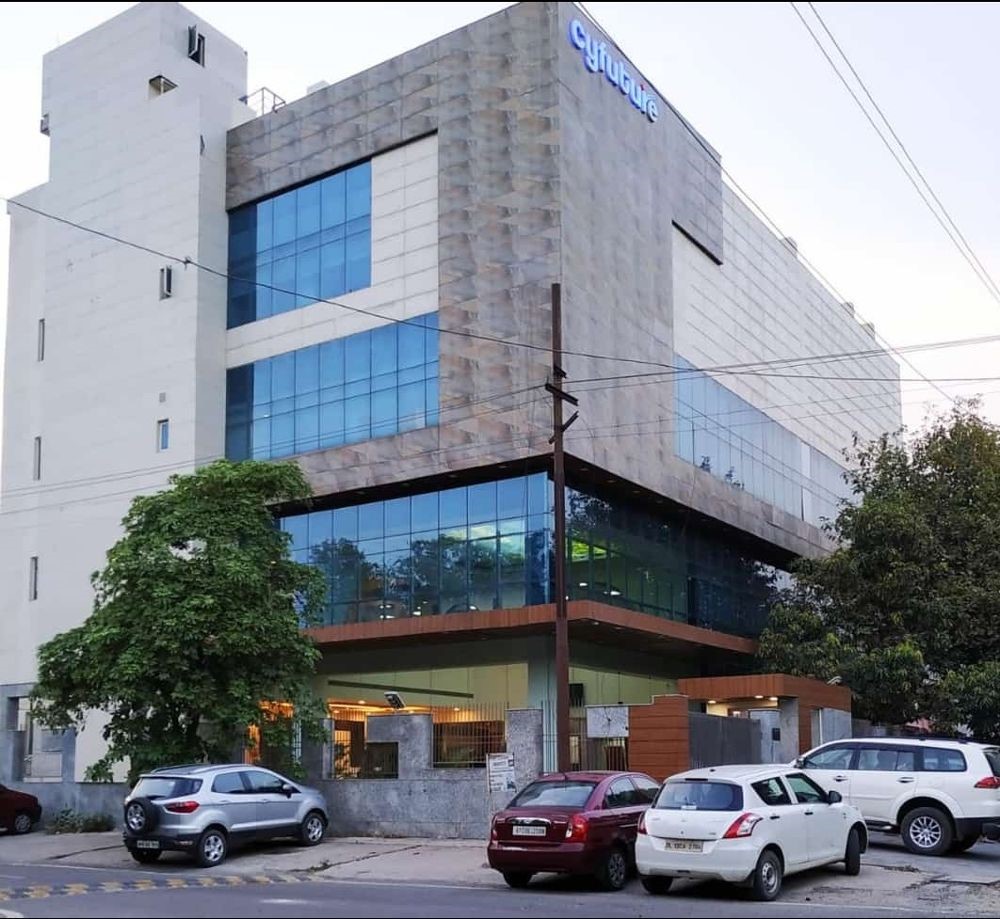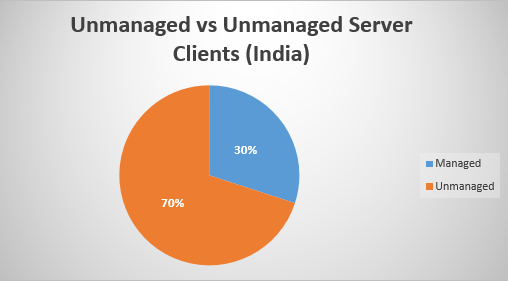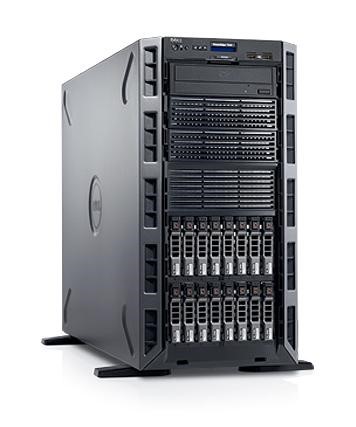Table of Content
That box right there is a data center, believe it or not. People say it’s Tier I, we’d call it just “box” because that is what it is. It has no backup power and no cooling system. Its only source of power is the switch next to it (not visible here). Its cooling system is basically the air conditioner in the room it is positioned, provided there’s an air conditioner in that room. You may not want the “box” for your business.
The building shown below is a data center too.

It has all the facilities a data center needs – dual power supply, dual cooling lines, armed guards and concrete boundaries that soar 10 feet high in the air. The barbed wire at the top has electricity running through. It’s advanced, protected, fast and reliable, but you may not want it either. It’s expensive. Let me correct myself: it’s way too expensive.
Here’s another data center, refer image below. It has as many features as you’d see in Tier IV – except the spikey barb wire with current running through it. It is reliable too. The guard here may not be armed but he certainly knows how to keep intruders away. It’s everything you would want in a data center. It’s Tier III, and you will want it, maybe not now but for sure once you complete reading this blog.

In this article, I will walk you through data center tiers. My focal point would be Tier-3 Data Centers. I will explain to you the things that should be taken into account when you first setup a data center. We’ll have an engaging session at the end of which you’d know why Tier III is the right choice for businesses in India. So why wait any more, let’s get started without further ado.
Uptime
| Data Center Tier | Uptime Availability |
| Tier I | 99.671% |
| Tier II | 99.741% |
| Tier III | 99.982% |
| Tier IV | 99.995% |
Take a look at the uptime availability for each of the Tiers. This data was released in March last year by an organization called The Uptime Institute, the governing body for data centers around the world. There’s no forgery here, take my words and consider the information I’ve divulged as 100% authentic, what other choice do you have.
Attractive stats, aren’t they? Who could have imagined the “box” (Tier I) had an uptime availability of 99.671%?
It absolutely nailed it, or so it seems. But let me tell you the insider’s story. Uptime Institute conducts its tests on data centers more than 90%* of which are in the USA, it’s an organization from that very nation after all. Testing data center infra in its own country is logistically easier, and that’s a no-brainer.
Had they conducted their tests in India or any other developing state, where power outages are far more frequent than in the States, the uptime scores would have been different, drastically different. The “box” in that case would have an availability less than 98% and Tier II somewhere around 99%. Neither is unacceptable, they are both too low.
Tier-3 Data Centers and above would still have an impeccable uptime record. The reason being they are too technically advanced to be affected by outages.
What if power outage affected Tier III & IV?
For a moment, consider that blackouts indeed affect III and Tier IV. The generator is out of fuel and there is no source that could kick in and supply power. It’s hypothetical but let’s assume it for a second. Even with all these adversaries, it won’t take more than a couple of hours to refuel the generator, kick-off backup and have the data center back in action. We estimate that even with this much delay the uptime should be at least –
| Tier III | 99.95% |
| Tier IV | 99.991% |
But why choose Tier III over Tier IV?
We know you cannot help but question why one should go for Tier III when Tier IV has better uptime availability and a more optimized network.
The answer lies in the cost-benefit analysis of the same. A Tier-3 Data Centers is down on average for around 4 hours every year and Tier IV for not less than 2 hours.
| Tier | Downtime (in one year) |
| III | 4.38 hours |
| IV | 2 hours |
Dedicated servers in Tier IV start @ $240/month, and @ 130$/month in Tier III, with more or less the same server configuration. Additional $110/month ($1,320 every year) for just 2 hours of uptime. The differential price is too big for a cause too small, don’t you think.
If I had a website, which I have, I’d choose rather Tier III, and so should every business in India.
There aren’t many Tier IV hosts in India
Most hosts in India are either Tier III or Tier II. We are still far from upgrading our old II-Tiers to Tier III, let alone moving to Tier IV. There are but a few Tier IV hosts and less than 10 data centers that are certified fourth-tier.
Some hosts have proclaimed themselves as Tier IV equivalents, not actually Tier IV but close. Self-proclaimed Tier IVs are those that are technically tier III but with uptime at par with that of Tier IV. Note that uptime is not the only criterion to be certified as Tier IV. You need barbwires atop your fence and a few buffed-up, armed guards.
The select few that are Certified Tier IVs have a long list of customers, and an equally long waitlist, with the wait time as high as 6 months for dedicated servers. If you can delay your website by so much as half-a-year, get yourself enrolled and sit in the waitlist. OR. CHOOSE TO HOST on Tier 3 data center instead.
The support is Useless if the server is unmanaged
If you have an unmanaged server, the quality of support is useless. You cannot call your host and ask it to fix a patch on your server, because it’s simply not covered in the contract. And ironically, support is the salespersons’ main pitch when selling Tier IV data center services.
Tier 4s are required to maintain a certain level of support. There are set parameters that each Tier IV must adhere to, failing which the Tier IV Certification may be abrogated. The technical staff is therefore made to undergo rigorous training and are what you may call battle-hardened warriors. The guidelines that each data center should comply with are updated from time to time by The Uptime Institute. To make these rules even more stringent, certifications issued are valid for not more than two years and require renewal every alternate summer.
To cut short, The Uptime Institute personally sees to it that Support is exceptional. In an unmanaged service, Customer Support is but Forbidden Fruit, delicious but nonetheless forbidden.
Most businesses in India prefer unmanaged servers
Businesses in India have almost always preferred unmanaged servers because-
- It allows them to take more control of their server
- More the control, more the flexibility and hence also the customizability
- Unmanaged hosting is cheaper than its managed counterpart
As hosting providers ourselves, we know only 3 out of 10 clients prefer managed servers. Our international clientele does have a significantly higher number of managed clients but businesses in India have nearly abhorred managed services. This, in some way, is reasonable.

International businesses are considered more affluent and can easily pour in extra $100 for managed hosts. Enterprises in India operate at lower profit margins, due to stiff market competition, and run on a shoe-string budget.
Since businesses only rent unmanaged servers in India, upgrading to Tier IV might not be of much help, except if you move to a managed server but that’d be expensive.
If I had a say in your business, I’d say that we stick with Tier III for some time and let Tier IV gradually take over. By that time, the amount of hype surrounding Tier IV would come down and with it its price. The cost is the main concern. It’s better, no doubt, but don’t you think the price is too exorbitant for its offered features?
Conclusion
At Go4hosting, we aim is to add value to our readers and there’s nothing we won’t do to help you quench your thirst for knowledge. You can encourage us to write more and more informative content by sharing our blogs as many times you can. We are also equally open to suggestions, criticism and covet your opinion as much as we yearn your sharing. Do spread the word and express yourself in the comment box below. Let us know what you loved or hated, if you hated anything, in this blog. You can also give us content ideas, we’d appreciate that. We will make sure to revert back with an engaging piece within a week or when our pens get flowing.






 Live Chat
Live Chat